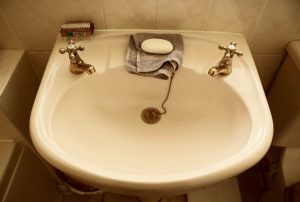 Many people are understandably alarmed when they notice black, gray, pink, or orange slime in their homes. These slippery residues are often found on taps, in the shower stall, around the toilet, or on the washing machine. First, it’s important to state that these materials are unpleasant, but they are not a threat to human health. In this article, we will take a closer look at this phenomenon to help you make informed decisions.
Many people are understandably alarmed when they notice black, gray, pink, or orange slime in their homes. These slippery residues are often found on taps, in the shower stall, around the toilet, or on the washing machine. First, it’s important to state that these materials are unpleasant, but they are not a threat to human health. In this article, we will take a closer look at this phenomenon to help you make informed decisions.
What is This Slime?
These slimy residues are usually visible signs of the presence of Serratia Marcescens which is a naturally occurring bacteria. This can be found growing in a number of water centric locations, including toilet water lines, basins, grout, shower corners, under taps, and more, This is a black, gray, pink, or orange discoloration that stains surfaces with a slimy film. This bacteria feeds on fatty soap or shampoo residues or materials that contain phosphorus.
What About Toxic Mold?
When people see the black variety of Serratia Marcescens bacteria they make a perfectly understandable assumption that it is black toxic mold. But, this isn’t a mold, it’s a biofilm which is essentially a bacterial colony that’s feeding on soap scum, shampoo residue, and mineral deposits. The color of the bacteria makes it easy to notice and it can be cleaned from taps, shower doors, shower liners, countertops, corners, and other surfaces. Any basic household cleaner can be used for cleaning or you could use white vinegar and a little elbow grease. When you’re done, disinfect and rinse the area with clean water and dry the surface with a clean towel. The slime will be flushed into the drain and you may want to add bleach to disinfect all surfaces.
Make Your Own Disinfection Spray
Disinfection is important to inhibit bacterial growth and you can make your own bleach spray. Simply add 6 oz of chlorine bleach power to warm water in a 12 oz spray bottle. Shake the spray bottle well and liberally spray the affected area and leave it to work for around 10 minutes. Then scrub the surfaces with a soft bristle brush. If you can, wash the shower curtain to remove any pink mold that may be lingering there. A gentle wash cycle with warm water will remove most stains including Serratia Marcescens biofilm. Drying the shower curtain outdoors to expose it to sunlight is a great way to use the sun as a natural disinfection agent.
The Inevitable Biofilm Return
These cleaning processes are effective, but they can be time consuming and the problem will always return. Regular disinfection is important, but removing one of the primary sources of food will help. Soap scum and shampoo residue are formed when the performance of these products is inhibited by hard water minerals. Soap suds that are required for cleaning cannot be formed and this diminishes the cleaning power. Many people add more soap or shampoo to compensate, but this makes little difference and it can make the problem worse. The best way to deal with this problem is to install a water softener to remove the dissolved minerals that make the water hard.
If you’re concerned about your water quality, contact your local water treatment specialist.
